Horseriding Trek to Khorgo-Terkhiin Tsagaan Nuur Region
(11 days)
Detailed description

Karakorum
Today we will be driving to Karakorum (also called Kharkhorin).
Karakorum was the capital of Genghis Khan’s Mongolian Empire in the thirteenth century. In 1220, Genghis Khan ordered the building of Karakorum on the ruins of Turug and Uigur cities in the Orkhon valley at the eastern end of the Khangai Mountains. During the reign of Ugedei Khan, it was completed 15 years later. The town was very multicultural and culturally accepting.
The silver tree, which was once part of Möngke Khan’s palace, has become Karakorum’s emblem.
From 1220 to 1260, it was at its most prosperous. Karakorum existed as the great capital of the Euro-Asian Empire, with Mongolia at its heart, and as the epicenter of politics, trade, culture, faith, intellect, and diplomacy, as well as the most visible link in international relations.
Between 1260 and 1380, Karakorum lost its status as the capital of the Great Mongolian Empire and became Mongolia’s capital. When Kublai Khan and his younger brother, Ariq Boke, assumed the throne of the Mongol Empire in 1260, they moved their capital to what is now Beijing. Karakorum was reduced to the administrative center of a Yuan Dynasty provincial backwater.
After 110 years after Kublai Khan transferred the Empire capital to China in 1260, the Mongolian Yuan Dynasty fell in 1368, and the center of Mongolian government was shifted to its homeland. It allowed Karakorum to regain its former glory.
The town was captured and destroyed by Ming troops under General Xu Da in 1388. Nothing remains of this legendary city today.
When Abtai Sain Khan and his brother, Lord Tumenkhen, went to the 3rd Dalai Lama in 1580 to express their desire to create a temple in Mongolia, he advised them to restore an old temple in Karakorum. The Main Zuu temple of Erdene Zuu monastery is a temple in Takhai ruins that was restored in 1588 at the Dalai Lama’s suggestion.
Erdene Zuu Monastery is now all that is left of what was once a massive monastery with 100 temples and over 1.000 lamas. You’ll walk around the grounds of Erdene Zuu Monastery, which is encircled by huge 400 m X 400 m walls. You will be guided around the 3 remaining temples: the Dalai Lama, Zuu of Buddha and Lavrin Temple.
The Karakorum Archaeological Museum will be another stop on your itinerary. It’s a tiny museum, but it’s housed in a new, well-run structure with good lighting and simple English labels on display cases. The displays contain hundreds of artefacts from the 13th and 14th centuries that were discovered in the immediate region, as well as those from other provinces’ archaeological sites, including prehistoric stone tools. Pottery, bronzes, coins, religious sculptures, and stone inscriptions are among the objects on display. A half-excavated kiln is also sunk into the museum floor. The scale model of ancient Karakorum, which attempts to reflect the city as it would have existed in the 1250s and is based on descriptions written by the French missionary William of Rubruck, is perhaps the most intriguing. A Turkic noble tomb with wall paintings and artefacts, including gold objects and jewels, is on display in another chamber. A short video of the actual burial site is available.
You can also visit the Turtle Rock and the Phallic Rock, as well as a small market that showcases local artists’ work.
(Ger Camp B, L, D)
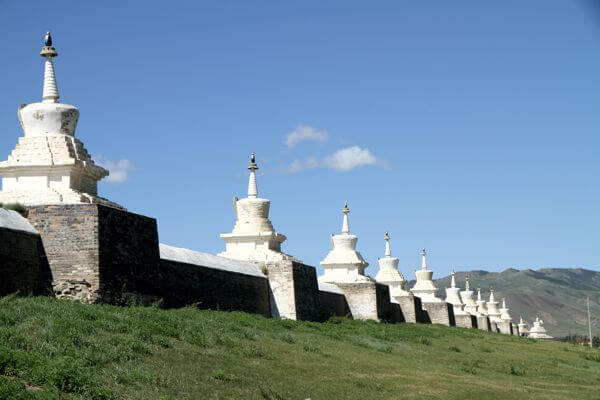
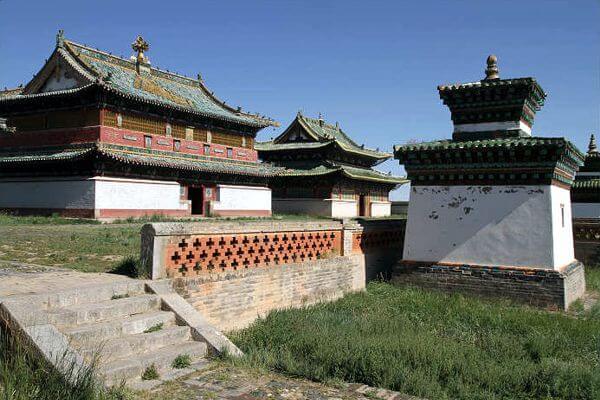
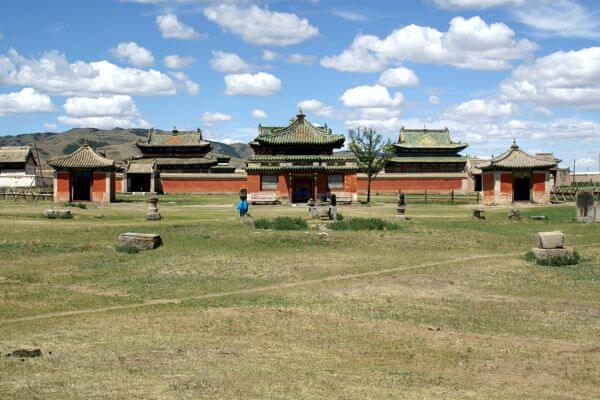

Khorgo – Terkhiin Tsagaan Nuur
Tsetserleg, the capital of Arkhangai province, will be our first stop. It’s a charming little town nestled among forested hills. We’ll go to the Buyandelgeruulekh Monastery, the town’s main operating monastery, as well as the Arkhangai Museum, which is housed in the Zayaiin Gegeenii Monastery. We’ll walk up the hill and take in the views of Tsetserleg and the surrounding hills.
We will arrive in the Terkhiin Tsagaan Nuur area at the end of the afternoon.
(Ger Camp B, L, D)
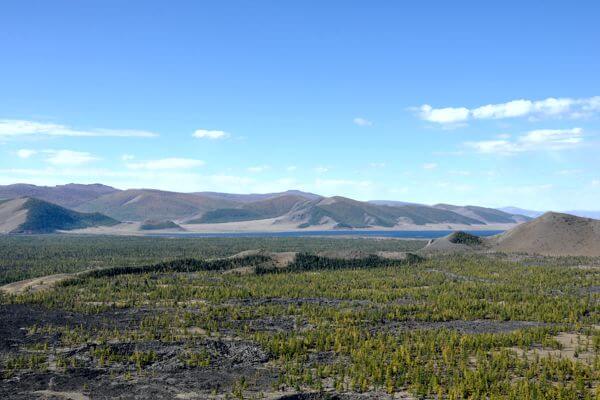

Khorgo – Terkhiin Tsagaan Nuur
We will spend one day at the lake, where we will participate in optional activities such as valley trekking, lake boating, horseback riding, or visiting a local family to learn about nomadic life. We will go on an excursion to the top of the Khorgo Uul Volcano in the morning. Khorgo Peak, a volcanic field, is about 4 kilometers from the lake. The volcano crater is 200 meters wide and 100 meters deep, and it is surrounded by trees at the back and around the opening. There are numerous basaltic “Gers” formed during the cooling of lava to the south of Khorgo Mountain; some of the Gers have gates and upper holes and exceed 1.7 m in height.
(Ger Camp B, L, D)
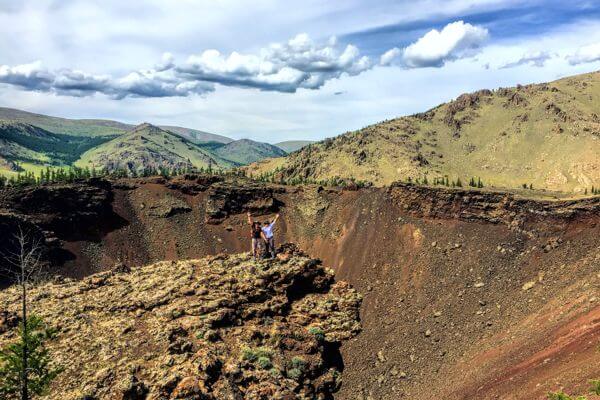



Horse riding in Mountain
Arkhangai Province in Central Mongolia is a beautiful part of the world with some interesting geological features and a large number of nomadic families who live a traditional lifestyle. It is an environment that is ideal for easy to moderate hiking and riding.
Volcanic activity thousands of years ago affected the White Lake and its surrounding area, resulting in some dramatic sights.
There are few steep slopes to ascend and for the most part we will follow an easy track. This morning we start a five-day ride. Our first day will be a ride through beautiful forest and canyon and Our first day will be a ride through beautiful forest and canyon and at the end of 3rd day ride we will reach Jargal village located at Ider River.
(Tented camping, B, L, D)
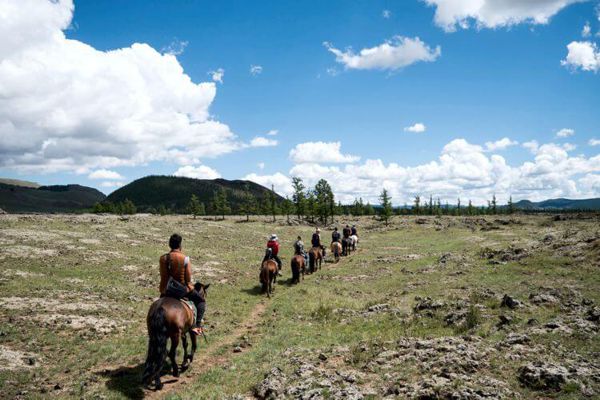


Horse riding along Ider River
Two more riding days riding along the beautiful Ider River. Ider River flows through Khovsgol and Zavkhan provinces and together with Delgermoron river makes one of the main sources to the Selenge river. It is 452 km long and its source is in the Khangai mountain range.
We will stop at a nomad family and experience their warm hospitality. For dinner we will be offered a typical Mongolian barbeque cooked over hot stone. Those who want will have the opportunity to try the “airag” or fermented horse milk. Our guide – translator will help us to forge contact with the local population.
At the end of day 8 we will say goodbye to our horses and horsemen.
(Tented Camp, B, L, D)
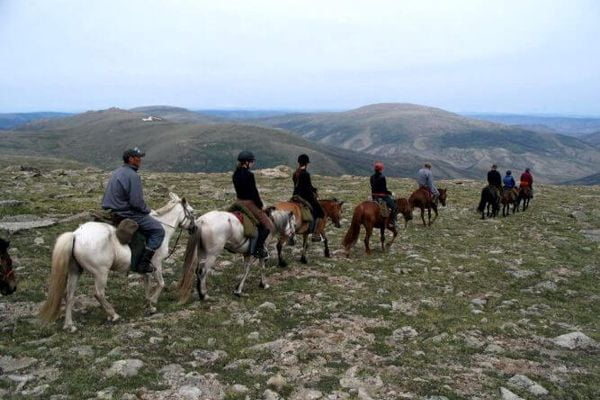

Drive to Telmen Nuur
Today we will head westwards passing Ikh-Uul and Tosontsengel villages of Zavkhan Province. At the end of the afternoon we will reach Telmen Lake. Telmen is a beautiful lake which hosts abundant birdlife. The lake lies near the boundary between the forest-steppe and steppe ecosystems. The lake water is slightly salty (about 4g per liter salinity). In early spring here you can see the rare desert flower “zambaga”. We will enjoy some hiking and relaxing near the lake.
(Tented camp B, L, D)
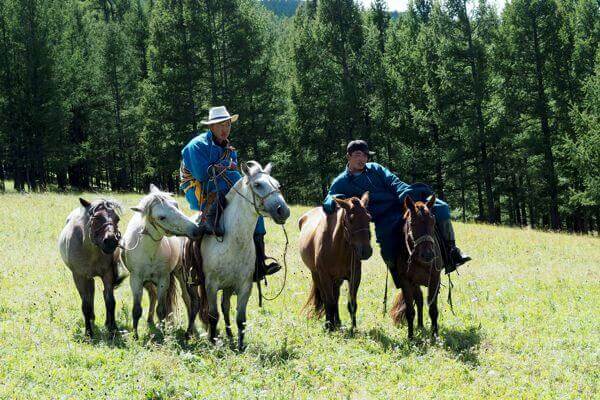

Drive to Uliastai
Today we will arrive at Uliastai to catch our flight. Uliastai is surrounded by mountains on all sides. It is one of the remote provinces of the country. Quiet and pleasant town.
(Hotel B, L, D)
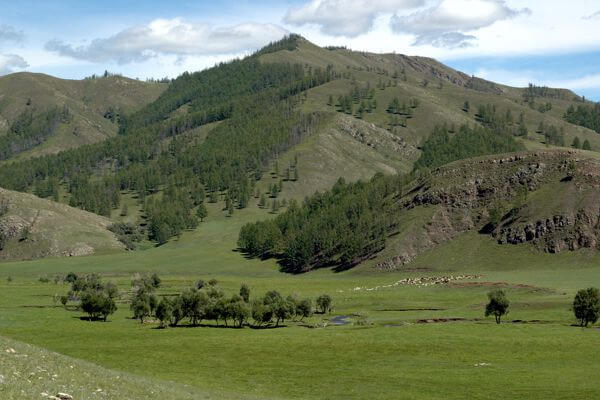

Flight back to Ulaanbaatar
The time has come to leave and fly back to Ulaanbaatar, Mongolia’s capital. You can use your free afternoon to see as you fit. You could always go see lovely cultural show and admire the contortionists while watching colorful and rhythmic Mongolian dances.
(B)
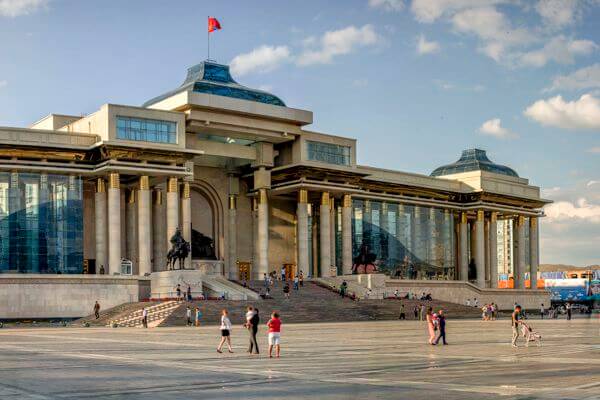
INCLUDED
- Land transportation
- 3 nights Ger camp stay
- 6 nights tented camp stay
- 1 night hotel
- Meals 10B, 10L, 10D
- Tour guides
- Camping and kitchen equipment
-
National park entrance fees/Museum
and Monasteries entrance tickets - Local flight
- Local airport transfer
- Horses to ride
NOT INCLUDED
- Hotel in Ulaanbaatar
- City touring
- Medical, trip insurance and evacuation costs
- Local flight excess baggage charge
- Alcoholic and soft drinks
- International airport transfer